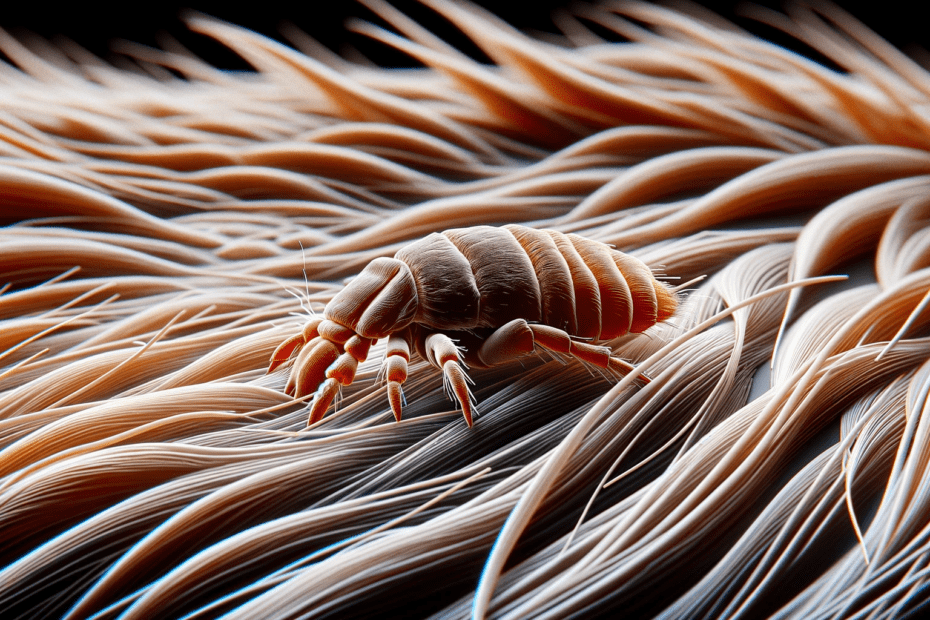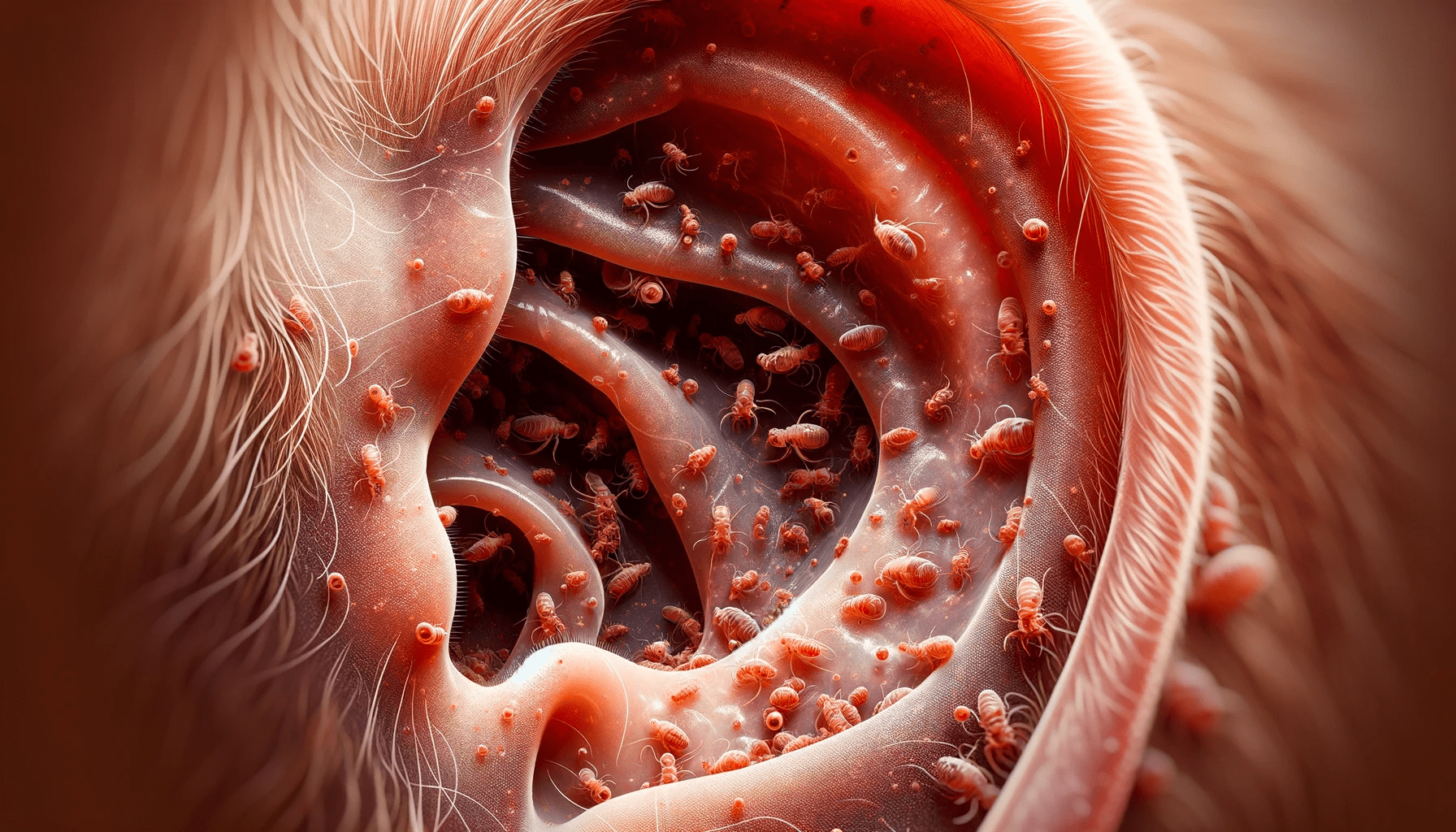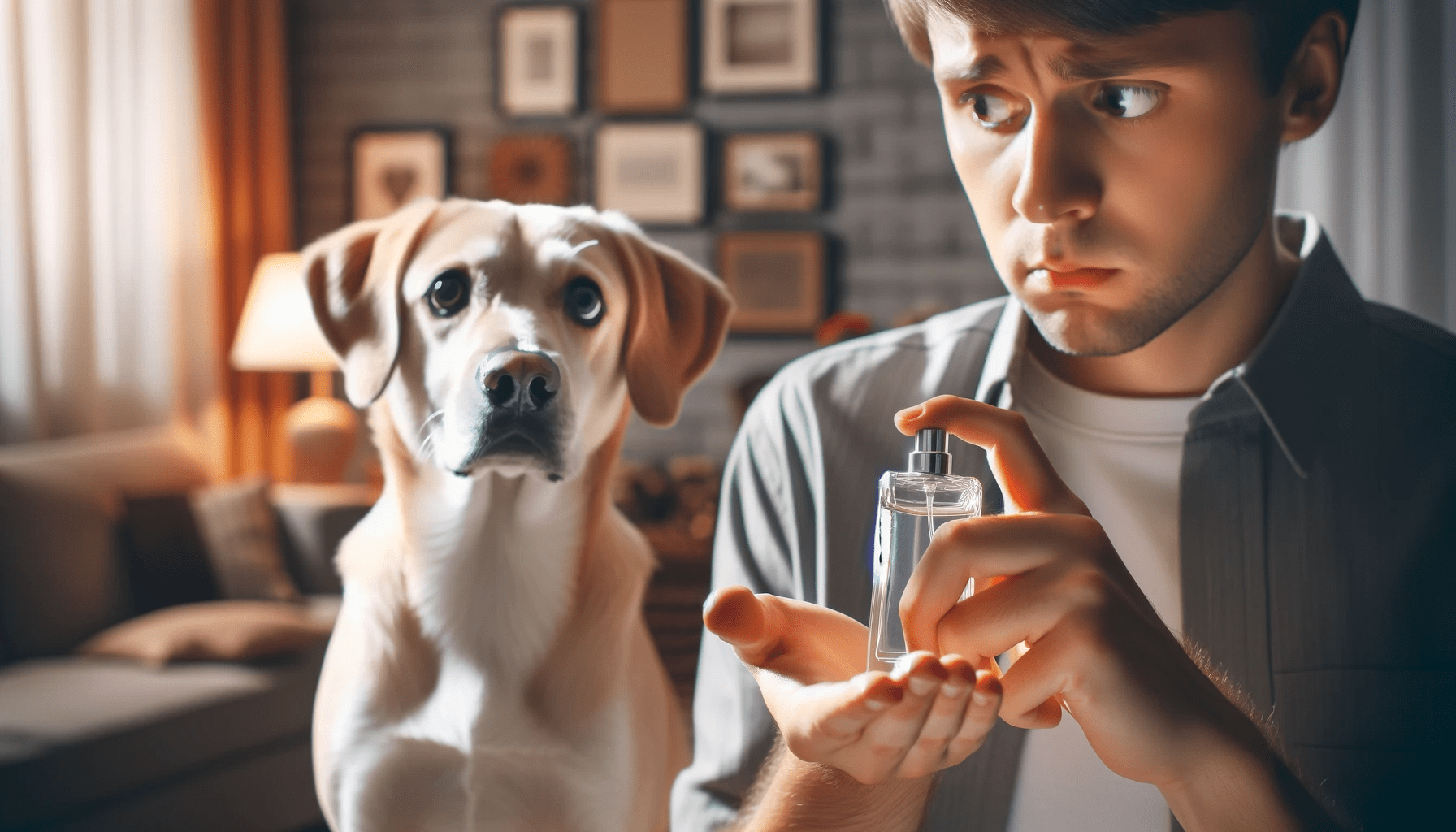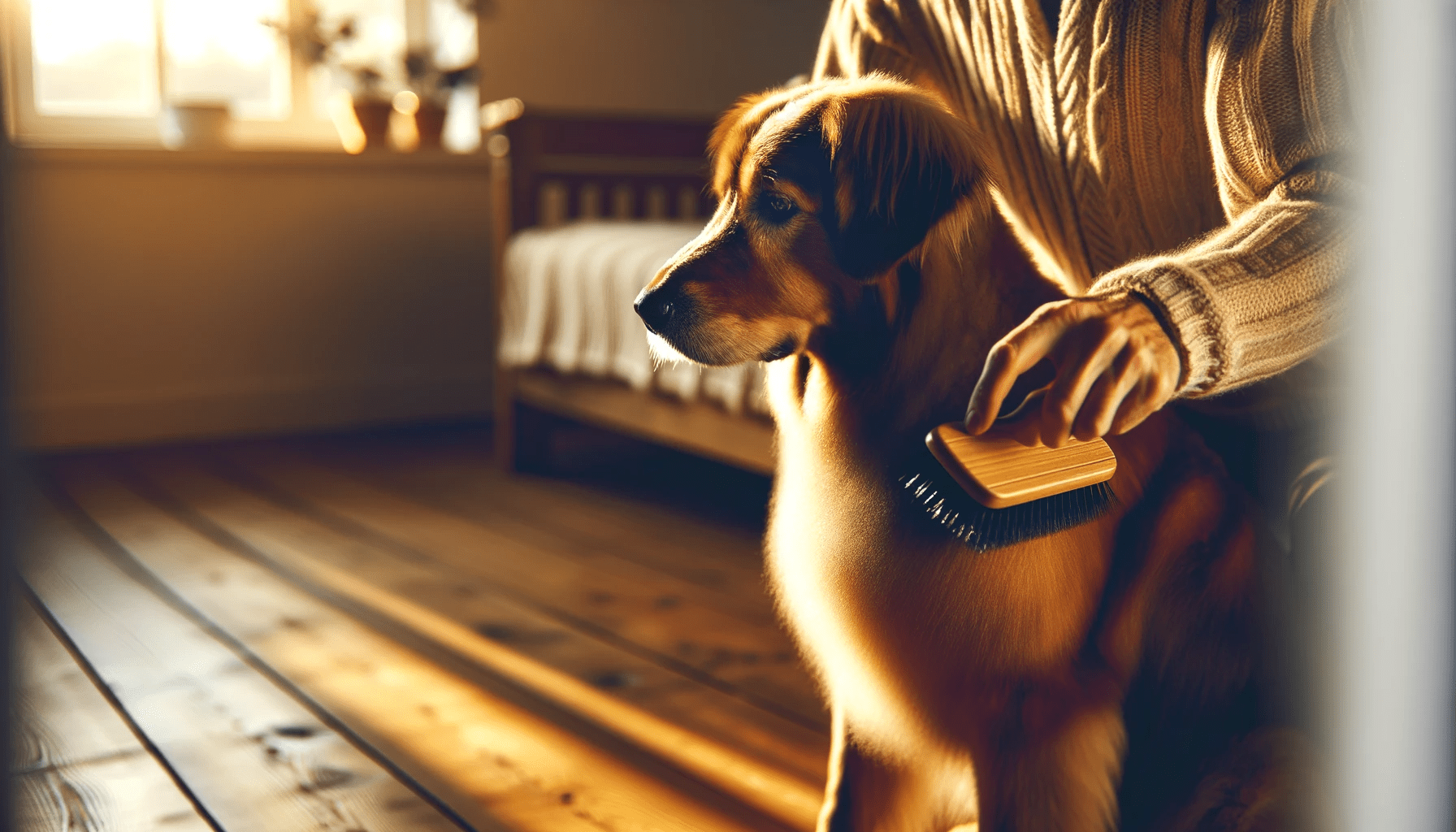Do you ever wonder what a flea looks like on your furry companion? Well, let me tell you, it’s like finding a needle in a haystack.
These tiny critters are small, flat-bodied, and have a dark brown color. They may be only 3 mm long, but they’re visible to the naked eye. Fleas are quick little buggers, making them hard to catch, but they do leave behind telltale signs.
Keep an eye out for flea dirt, which is their feces, and those itchy flea bites on your dog’s skin. Spotting these pesky intruders early is crucial to taking action and preventing a full-blown infestation.
Key Takeaways
- Fleas on dogs are small, measuring only 1-2mm in size and have a dark brown coloration.
- Flea dirt, the feces of fleas, appears as tiny black specks on a dog’s skin and can be used to confirm the presence of fleas.
- Dogs with fleas may exhibit excessive scratching or itching, particularly around their neck, ears, and base of the tail.
- Flea bites on dogs can cause red and bumpy rashes, often found on the belly, groin, or base of the tail.
Size and Color of Fleas on Dogs
If you’re wondering what a flea looks like on your dog, it’s a small, dark brown insect measuring only 1-2mm in size. Fleas are tiny creatures that can easily go unnoticed on your dog’s fur. Due to their small size and fast movement, they can be challenging to spot. However, their dark brown color helps them blend in with the dog’s hair, making them even harder to identify.
It’s crucial to be vigilant and inspect your dog regularly for signs of fleas. One way to spot their presence is by looking for tiny black specks on your dog’s skin, known as ‘flea dirt’. These specks are actually flea feces and can be easier to detect than the fleas themselves.
Another method to confirm the presence of fleas is to place some of the flea dirt on a moist white tissue. If the dirt leaves a red stain, it indicates the presence of fleas, as their feces contain digested blood.
Distinctive Features of Fleas on Dogs
Spotting distinctive features of fleas on dogs can be helpful in identifying and addressing any potential infestation.
Fleas on your dog are small, measuring about 3 mm in length. They’re fast and have a dark brown coloration, making them easily distinguishable from other insects. These tiny parasites are equipped with strong hind legs, allowing them to jump from host to host with ease.
One of the most distinctive features of fleas on dogs is the presence of flea dirt. Flea dirt appears as black specks on your dog’s fur and is actually flea feces. It can be easily distinguished from ordinary dirt by its staining properties. When placed on a moist white tissue, flea dirt will turn red due to the presence of digested blood. This is a clear sign that your dog has fleas.
In addition to flea dirt, flea bites on dogs can also be a sign of infestation. Flea bites typically cause a red and bumpy rash on your dog’s skin, particularly in areas such as the belly, groin, or base of the tail. These bites can be itchy and uncomfortable for your dog, so it’s important to address the infestation promptly.
Understanding the distinctive features of fleas on dogs is crucial in identifying and treating an infestation. By recognizing these characteristics, you can take the necessary steps to keep your dog happy and healthy.
Symptoms of Fleas on Dogs
You may notice several symptoms if your dog has fleas. One of the most common signs is excessive scratching or itching. Dogs with fleas will often scratch themselves vigorously, particularly around their neck, ears, and base of the tail. In some cases, this can lead to hair loss and the development of hot spots, which are areas of inflamed and irritated skin.
Another symptom of fleas on dogs is the presence of red and bumpy rashes. Flea bites can cause an allergic reaction in some dogs, resulting in the formation of small, raised bumps on the skin. These rashes are typically seen on the belly, groin, and base of the tail, where fleas tend to congregate.
Additionally, you may observe flea dirt on your dog’s fur. Flea dirt is the feces of fleas and appears as tiny black specks. If you wet these specks and place them on a white tissue, they’ll turn red due to the digested blood present in flea dirt.
In more severe cases, dogs may experience flea allergy dermatitis, which is an allergic reaction to flea saliva. This condition can cause intense itching, redness, and inflammation of the skin. Furthermore, fleas can transmit diseases and parasites such as tapeworms and murine typhus, so it’s important to be vigilant and address flea infestations promptly.
Identifying Flea Bites on Dogs
To identify flea bites on your dog, observe their skin for signs of scratching or redness. Flea bites typically cause a red and bumpy rash, often found on the belly, groin, or base of the tail.
It’s important to consult with a vet for an accurate diagnosis, as flea bites can resemble other skin diseases.
Recognizing Flea Bite Symptoms
If your dog is experiencing itchiness and irritation, it could be a sign of flea bites. Recognizing flea bite symptoms is crucial in identifying and addressing a flea infestation.
Flea bites on dogs typically appear as red, bumpy rashes, often found in areas such as the belly, groin, or base of the tail. These bites can cause severe itchiness and discomfort for your furry friend. It’s important to note that flea bites on dogs can resemble other skin diseases, making an accurate diagnosis challenging.
To confirm the presence of fleas, look for flea dirt, which is the feces of fleas. Flea dirt can be identified by placing it on moist white tissue, where it will stain red.
If you suspect your dog has flea bites, consult with a veterinarian for proper diagnosis and treatment.
Treating Flea Bites
Continuing from the previous subtopic, recognizing flea bite symptoms on your dog is essential. Flea bites on dogs can appear as a red and bumpy rash, typically found on the belly, groin, or base of the tail. These bites can cause intense itching and discomfort for your dog.
To identify flea bites, carefully examine your dog’s skin for small red bumps grouped closely together. Fleas often leave behind dark specks of flea dirt on your dog’s fur, which is actually flea feces. You can confirm the presence of fleas by combing your dog’s fur with a fine-toothed flea comb and observing any live fleas or flea dirt that’s left behind on the comb.
Once you have identified flea bites on your dog, it’s crucial to take immediate action to treat the infestation and provide relief for your pet.
Preventing Future Infestations
Regularly grooming and checking your dog’s skin for signs of scratching or redness is essential for preventing future flea infestations. By inspecting your dog’s fur, you can identify the presence of fleas and take appropriate action. Adult fleas are small, about 1/8 inch in length, and they’ve a flat, reddish-brown body. They’re agile and can move quickly through your dog’s fur.
In addition to grooming, it’s also important to address the environment your dog lives in. Flea eggs, larvae, and pupae can be found in carpets, bedding, and other areas where your dog spends time. Regularly cleaning and vacuuming your dog’s bedding and the areas where they rest can help prevent future infestations.
Checking for Fleas on Dogs
To check for fleas on your dog, start by examining their skin for signs of scratching or redness, as these can indicate flea bites. Look for a red and bumpy rash on areas like the belly, groin, or base of the tail.
Additionally, inspect your dog’s fur for flea dirt, which appears as small black specks and is a sign of fleas or a recent infestation.
Visible Signs of Fleas
Check your dog’s fur for small, dark brown insects that measure around 3 mm long to identify visible signs of fleas. Fleas are small, flat-bodied parasites that infest dogs and cause discomfort and irritation. They can be difficult to spot due to their size and agility.
However, by closely examining your dog’s fur, especially in areas like the belly, groin, and base of the tail, you may be able to detect these tiny pests. Look for the presence of small, dark brown insects moving quickly through the fur. Fleas are known for their jumping ability, so you may observe them leaping from one area to another.
Identifying these visible signs of fleas is crucial in order to take immediate action and prevent further infestation.
Flea Treatment Options
To properly address flea infestations, it’s important to know your options for treating the presence of fleas on your dog. There are various treatments available that can effectively eliminate fleas and prevent future infestations.
One option is topical treatments, which are applied directly to your dog’s skin and provide long-lasting protection against fleas. These treatments typically contain insecticides or insect growth regulators that kill fleas at different stages of their life cycle.
Another option is oral treatments, which are administered orally and work by killing fleas when they bite your dog. Additionally, there are insect growth regulators that can be used in combination with other treatments to prevent the development of flea eggs and larvae.
It’s important to consult with your veterinarian to determine the most suitable treatment option for your dog.
Preventing Flea Infestations
Regularly inspecting your dog for signs of fleas is essential to prevent infestations and ensure their well-being. Fleas are small and fast, making them difficult to spot, but even a small number can cause severe itchiness and irritation in dogs.
To prevent flea infestations, it’s important to not only treat the dog but also take thorough prevention and control measures in the environment. Flea dirt, which is the feces left behind by fleas, can be a clue to confirm their presence on your dog. Checking for signs of flea bites, such as red and bumpy rashes, especially in areas like the belly, groin, and base of the tail, can help you detect a flea infestation early and take appropriate action.
Treatment and Prevention of Fleas on Dogs
To effectively treat and prevent fleas on your dog, it’s important to take proactive measures and consult with a veterinarian. Fleas can cause discomfort and health issues for your pet, so it’s crucial to address the problem promptly.
When it comes to treatment, there are several options available. Your veterinarian may recommend topical treatments, which are applied directly to your dog’s skin. These treatments typically contain insecticides that kill adult fleas and prevent future infestations. Oral medications are another option, which can kill fleas when they bite your dog. These medications often need to be administered monthly for continued protection.
In addition to treating your dog, it’s essential to address the environment to prevent reinfestation. Clean or discard bedding, toys, and other items that may be harboring fleas. Vacuum your home regularly, paying extra attention to areas where your dog spends time. It’s also recommended to use pest control products designed specifically for fleas to eliminate any remaining pests.
Prevention is key in keeping your dog flea-free. Use preventive products, such as oral or topical treatments, that can kill fleas before they become a problem. Insect growth regulators can also be effective in preventing flea infestations by disrupting the flea life cycle.
Frequently Asked Questions
How Do I Know if a Dog Has Fleas?
You can tell if your dog has fleas by looking for signs of scratching, redness, or a bumpy rash on their belly, groin, or tail. Flea dirt on their fur or bedding is another indicator.
Can You Visibly See Fleas on Dogs?
You can see fleas on dogs, especially if you search their fur. They are small, fast, and can be hard to spot. However, there are various flea treatment options and prevention tips available.
Can You Catch Fleas From Your Dog?
Yes, you can catch fleas from your dog. Fleas can easily jump onto humans and cause itching and discomfort. Prevention is key: use flea treatments, regularly check your dog for symptoms, and promptly treat any flea infestations.
Can Dog Fleas Transfer to Humans?
Dog fleas can transfer to humans, posing health risks. Preventing flea infestations is crucial. One interesting statistic: female fleas can lay up to 50 eggs per day, rapidly increasing the flea population on a dog.
Conclusion
In conclusion, identifying fleas on dogs is crucial for their health and well-being. These small, dark brown insects measure around 3 mm in length and can be difficult to spot due to their quickness. However, their presence can be detected through signs such as flea dirt and bites on the dog’s skin.
By promptly identifying and taking appropriate action against fleas, we can prevent further infestation and ensure the comfort of our furry friends.






